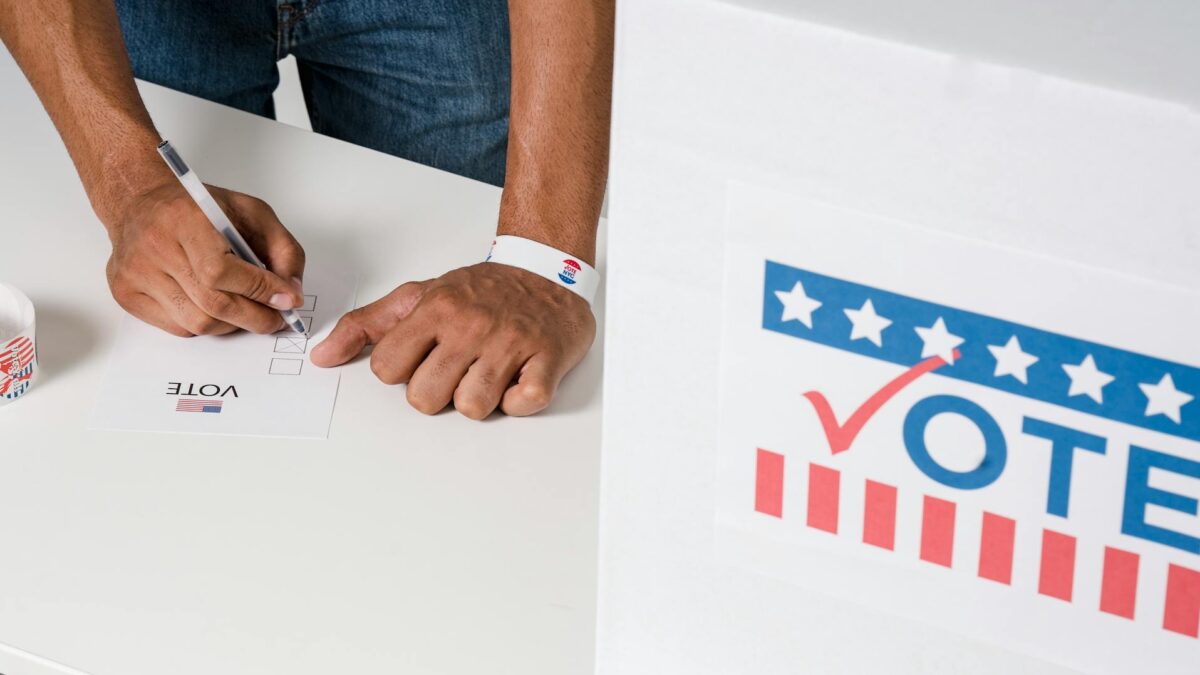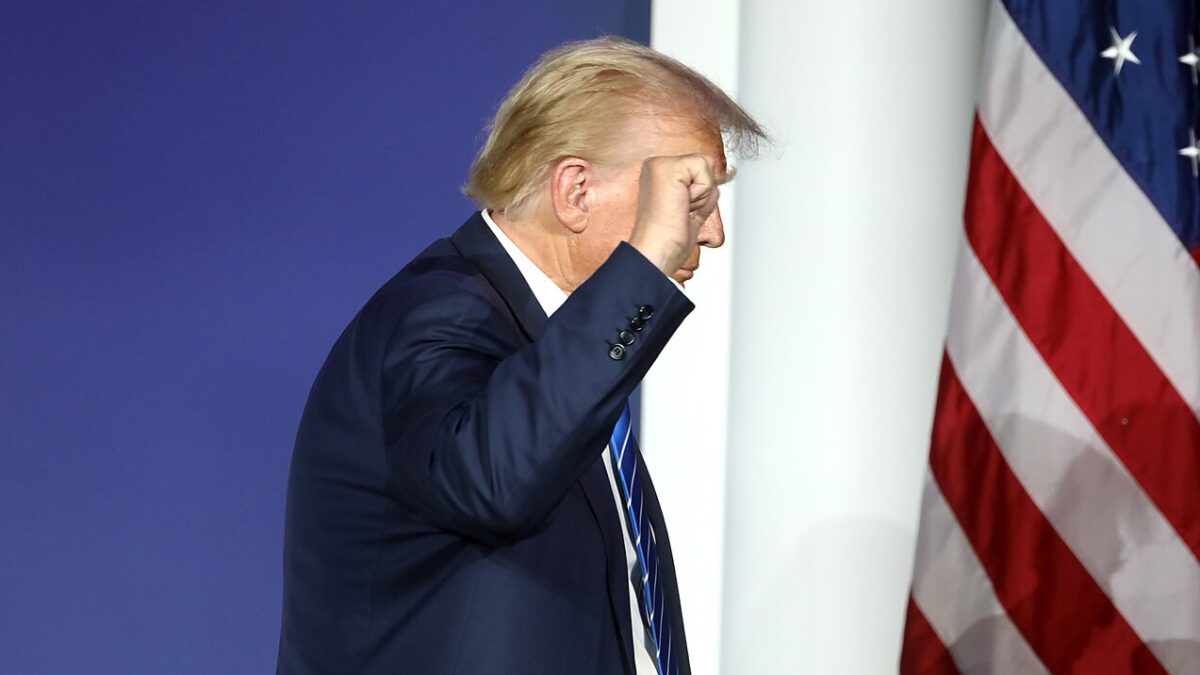
There was no grand bargain in Hanoi between President Trump and Kim Jong-un at the second summit between the two leaders. After meeting and taking some questions from reporters in which both were optimistic (Trump was more guarded about what would be accomplished at this summit), they didn’t even go through with a planned lunch. While disappointing for some hoping for concessions from Trump and Kim that would yield at the minimum “confidence building” measures, the news of a no-deal outcome came to me as a relief. Here’s why.
Trump Owes Kim Nothing
President Trump has already been over-the-top generous towards Kim and owes him exactly nothing. The first summit in Singapore was a PR victory for Kim, who is known internationally for what he is: a cruel, ruthless dictator who sits atop a strange (though don’t confuse it for irrational) brand of Communist authoritarianism and deserves global isolation. The state’s official ideology is juche, which infuses racism and dynastic rule and has Communist influence. It’s dangerous and still deserves global isolation.
Despite Trump’s public flattery of Kim, it’s a mistake to confuse this for delusion. Trump knows how bad Kim is; in fact he laid it out in the 2018 State of the Union address.
But Trump, committed to decreasing the hostility of the two countries in the hopes of making progress on the issue peacefully, has taken an unprecedented approach: give Kim the flattery and photo opps not as a reward for disarmament, but instead as an inducement for more. Trump is trying to get the young Kim drunk on praise and fame with the promise that more will follow in greater degrees, if only Kim will accept the deal of all deals with President Trump and choose economic prosperity in exchange for his nuclear missile program.
So far, Kim has rebuffed this offer. According to the president, in Hanoi, Kim demanded total sanctions relief upfront in exchange for only minimal steps towards denuclearization. It is an absurd demand and if those disappointed with the results of the summit want someone to blame, the blame rests with Kim Jong-un and him alone.
Cause For Hope
Taking stock of where we are now, there are some glimmers of good news.
For one, Kim continues to refrain from missile testing. Kim’s testing of missiles is highly provocative, especially when he flies them over U.S. ally, Japan, and toward Guam. Testing is also necessary to prove the reliability of those missiles.
Two, we have diplomatic channels open, including at the very top between the two nations’ leaders, which decreases the chance of miscalculation.
Three, North Korea and South Korea are making progress to actually demilitarize the Demilitarized Zone, or the DMZ.
Four, North Korea has sent back to the United States 50 sets of remains, of which some have already been proven to be genuine remains of America’s precious citizens who gave their lives in the Korean War. This brings comfort to family members and allows the United States to bury them on American soil.
Five, Trump has maintained economic sanctions on North Korea as long as it refuses to make genuine steps towards dismantlement. This is key. This is where previous U.S. efforts have always gone badly: pressure brings North Korea to the negotiating table, and relief in pressure causes North Korea to return to its old and very dangerous ways. Relieving economic pressure before Kim disarms only aids Kim in his quest to further improve his nuclear program.
The Bad News
One, every missile and nuclear weapon that was in North Korea at the time of the Singapore Summit is still there. And just because the regime has stopped testing missiles doesn’t mean it has stopped producing them or producing nuclear (and chemical and biological) weapons. In fact, we have reason to believe the regime is doing just that. Moreover, there are reports that indicate North Korea continues to proliferate weapons outside its borders including chemical weapons technology to Assad in Syria. Recall, North Korea and Iran have a history of cooperation.
Two, communication with North Korea, while improved, leaves much to be desired. Sometimes they still rebuff U.S. diplomats. And if our entire strategy is based on the relationship between the two leaders, it is worth keeping in mind that Kim Jong-un will be around long after Trump is out of office.
Three, demilitarizing the DMZ is a paradox. The rival Koreas have removed some mines and other explosives to reduce tensions, but the threat of invasion is from the North to the South, not the other way around, so this benefits North more than South. (Only a small portion of the estimated 2 million explosives have been removed.)
Four, we still have thousands of remains of U.S. war dead in North Korea. And it would do everyone good to remember that the reason we have remains there is because the Communist North, with the help of Communist China, invaded South Korea in 1950 to try to force unification of the peninsula and the United States sustained 36, 574 losses, many more wounded, and 7,926 missing in action, (and our allies lost many more) to repel them. We owe North Korea nothing. The Kim regime is the one that needs to prove it no longer poses a threat to the peace of the region and beyond.
And five, while the United States keeps sanctions in place, the sanctions regime is cracking as South Korea and China and others violate sanctions. It’s not impossible for the United States to ratchet maximum pressure back up, but it would come at the cost of ratcheting up hostilities between the two countries again. This still might be required, and seems more plausible to me if Trump wins a second term.
The Path Forward
But at this point, the most desirable and realistic path forward is for the United States to do what we can to keep economic pressure on the regime, maintain communication at the working and leadership levels, and to maintain the ultimate goal which is the complete, verifiable, irreversible, dismantlement (CVID) of North Korea. The United States should also continue to collaborate with our allies in the region, most of all Japan. Even if military exercises have been paused, there is more we can do to maintain the strength and preparedness of our militaries. The United States should also continue its nuclear modernization program, ensure it remains on time, and heavily invest in its missile defense program to protect the U.S. homeland and our interests abroad. The current approach is unlikely to stay ahead of the North Korea missile threat at this rate.
The worst-case scenario would be to appear to accept North Korea as a nuclear power. It is imperative when thinking about this issue to not fall for the belief that merely avoiding nuclear employment is the only goal. Peace and U.S. security is the goal, and that comes with increasing American sovereignty and our ability to act in the world on our own terms without being coerced or blackmailed by countries like North Korea. Pyongyang’s nuclear missile program gives it enormous ability to coerce the United States and the more effective the nuclear missiles, the more effective the regime’s ability to coerce. Moreover, North Korea is a major weapons proliferator, and continues to demonstrate this even now. What’s more, accepting North Korea as a nuclear power would almost guarantee other nations will want their own nuclear weapons (first among them, Japan).
None of the options before us are good, and previous U.S. presidents share some of the blame for failing to stop North Korea’s march toward a more credible nuclear missile program; but ultimately, as it always is, the blame for the current precarious situation deserves to be placed squarely on the inhumane, aggressive, and belligerent hostile county’s regime leaders, and without changing that, we can only manage the dangers as best as we can.









